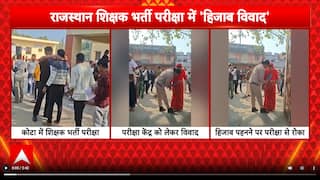Astronomers May Have Just Seen A Brand New Kind Of Stellar Explosion — Supernova Triggered By Black Hole
Astronomers have made a discovery of a black hole or neutron star colliding into the core of its companion star, resulting in a supernova — something that was only theoretically predicted earlier.

New Delhi: Astronomers recently discovered an unusual and astonishing phenomenon. A black hole or neutron star swirled into the centre of a companion star, resulting in a supernova explosion of the latter. Such a ‘merger-triggered supernova’ is something that has happened for the first time, astronomers claim.
Researchers from the California Institute of Technology (Caltech) in the US have explained the occurrence in a paper published in the Science journal.
What Is A Supernova And A Neutron Star?
A supernova is the explosion of a star, taking place at the end of its lifecycle. A change in the core or centre of a star causes a supernova to happen. It’s a luminous phenomenon that often appears brighter than the galaxy it is located in.
When the nuclear fuel of a massive star is exhausted, and the star explodes, core collapse supernova occurs, the study states. Interruption in such fusion could be caused due to an evolved massive star merging with a compact companion, such as a neutron star.
A neutron star is formed when a massive star runs out of fuel and the core collapses, breaking down every proton and electron into a neutron. If the core of the massive star is between one and three solar masses, the collapse is halted by the newly-formed neutrons, and a neutron star is left behind.
How Was The Unusual Occurrence Spotted?
The scientists behind this study examined data and images from the Very Large Array Sky Survey (VLASS), a multi-year project using the National Science Foundation's Karl G. Jansky Very Large Array (VLA), and were taken aback by the observations, which provided them the first clue.
The VLASS had started making observations in 2017. The scientists found an object emitting brightly at radio wavelengths, something which had not appeared in an earlier VLA sky survey, called Faint Images of the Radio Sky at Twenty centimetres (FIRST). The scientists used the VLA and the Keck Telescope in Hawaii to further observe the object, and determined the source of the bright radio emissions to be the outskirts of a dwarf, star-forming galaxy, about 480 million light-years away from Earth. A burst of X-rays emitted by the object had been detected by the MAXI Instrument of the International Space Station in 2014, the scientists found.
The Surprise Supernova Discovery
The data collected by the astronomers helped them decipher the mystery and history behind this occurrence. The scientists determined that the neutron star or black hole, and its companion star, before exploding as a supernova, were binary stars, closely orbiting each other, and were more massive than the Sun. The bigger star ran out of nuclear fuel and collapsed under its own core as a supernova, leaving behind a super dense neutron star or a black hole.
The study explains that this remnant's orbit kept coming closer to the companion star, causing the remnant to enter into the companion's atmosphere about 300 years ago. As a result of this interaction, the companion started ejecting gas into space, forming a donut-shaped ring called torus around the system.
The black hole or neutron star eventually entered the core of the companion star. This disrupted the nuclear fusion occurring within the companion star, which was preventing it from collapsing under its own gravity. The collapse of the core led to the creation of a disk of material which was closely orbiting the neutron star or black hole. The collapsing core thrusted a jet of material outward from the disk, drilling its way through the star.
In a statement by the National Radio Astronomy Observatory, D.Z. Dong, one of the researchers and lead author of the paper, said the X-rays detected by the MAXI Instrument were produced by this jet.
The observations confirmed the year of occurence to be 2014. He added that just like the massive star which had earlier collapsed, the companion star's core collapsed as well, resulting in the supernova explosion which the team of researchers found. Dong said that the merging of the neutron star or black hole with the companion star accelerated the process of explosion.
The scientists attribute the bright radio emissions, seen by the VLA, to powerful shocks resulting from the supernova blast colliding with the material ejected by it.
Though VLASS is meant to discover phenomena such as supernova explosions, this event of a stellar merger was a surprise, the scientists note. In a statement by the National Radio Astronomy Observatory, another researcher Gregg Hallinan, also from Caltech, was quoted as saying: "Of all the things we thought we could discover with VLASS, this was not one of them."
Related Video
Southern Rising Summit 2024: How Important is Self-Awareness? Insights from Anu Aacharya | ABP LIVE







































